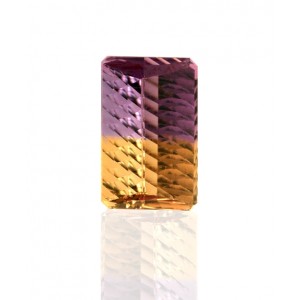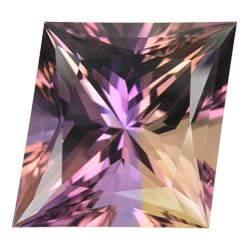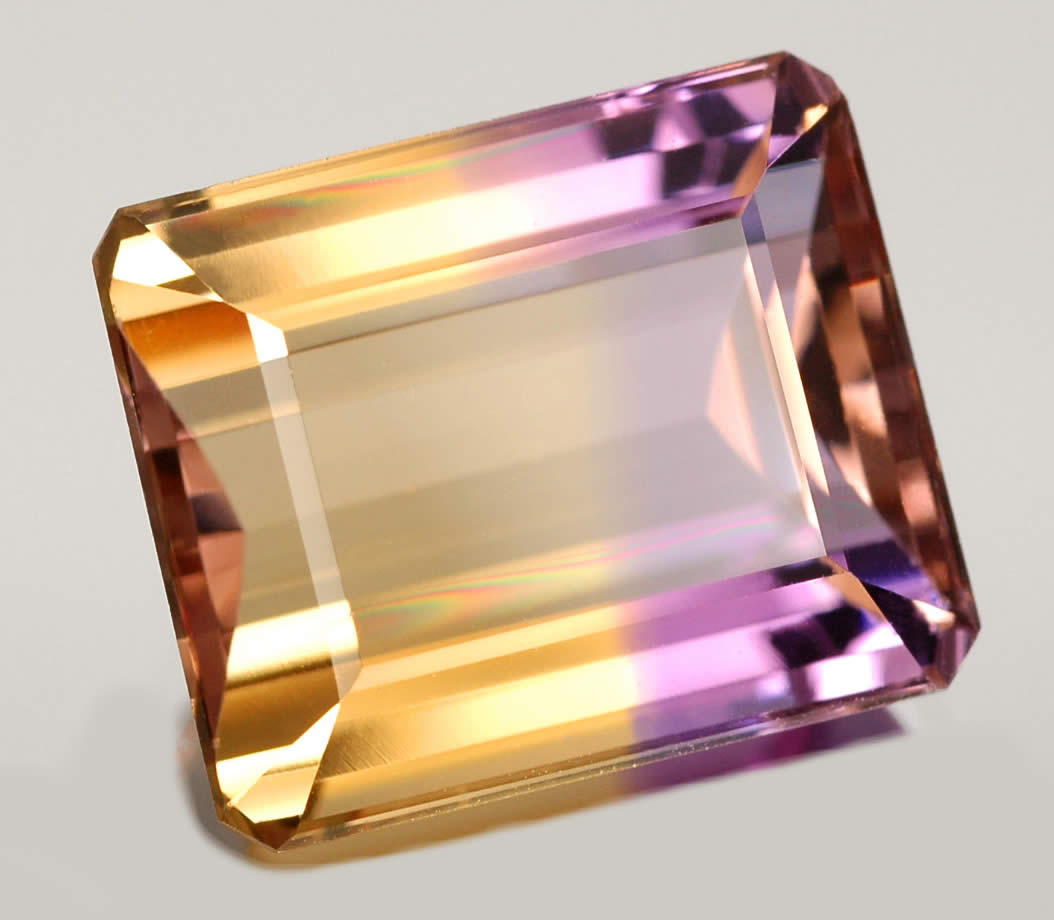Ametrine is a rare gemstone made from quartz. Ametrine is a mix of two distinct minerals, the first being Amethyst and the second being Citrine.
Amethyst is the rarest form of quartz and has the distinction of giving off a beautiful violet or purple color. Citrine gives off a yellow orange color and is the same substance as Amethyst, but it has been superheated in the earth’s core. Both of these mineral properties are found in Ametrine.
Ametrine is sometimes referred to Trystine. Ametrine also has a commercial name called Bolivianite. Bolivianite was chosen because. It should be noted that Ametrine has only been sold commercially since 1980.

.jpg)
Ametrine comes in three major colors and usually has all three colors present. It usually has purple, yellow and orange. Ametrine is crystal in structure, usually hexagonal in shape. It is either a glassy translucent or transparent. It is important to note that it is a very hard substance, measuring a 7 on Moh’s hardness scale. Ametrine’s hardness makes it perfect for being cut into shapes for ornamental jewelry. In fact, Ametrine doesn’t really have any industrial uses; it is sold mainly for it’s beauty.
Ametrine is rare and only found in a few places, so the size of the stones are usually at most a few carats. Ametrine is normally cut and made into high quality pieces of jewelry in many shapes such and forms, such as earrings, charms, bracelets and especially rings.
Ametrine is a type of naturally occurring quartz that is made from a mixture of Amethyst and Citrine. Amethyst is a wonderful gemstone that is valuable and rare. It is usually the color of purple or violet; however it does come in shades of rose, lavender and mauve. Citrine is the same mineral as Amethyst except that it is heated. It is orange yellow in color. Ametrine combines both these stones colors into one. Ametrine sometimes has three distinct colors, violet or purple and yellow and green.

Ametrine’s scientific formula is SiO2. It is a macrocystalline which is made from quartz. It is important to note that quartz is the most abundant mineral on earth. It actually makes up 12% of the earth’s crust. Ametrine contains sulfur and oxygen, but also has iron impurities that are the cause of Ametrine’s beautiful colors. The class of Ametrine is tesctosilicate and the crystal system which it forms in is hexagonal in nature.
Ametrine has a harness of 7, measured on the Moh’s scale, and gives off two distinct colors, either yellow-orange or purple. It is said to have a vitreous luster and the crystals are either transparent or translucent.

Ametrine can be found in very small quantities in other places such as India and Brazil. However, KGE has the strongest holding of Ametrine in India.